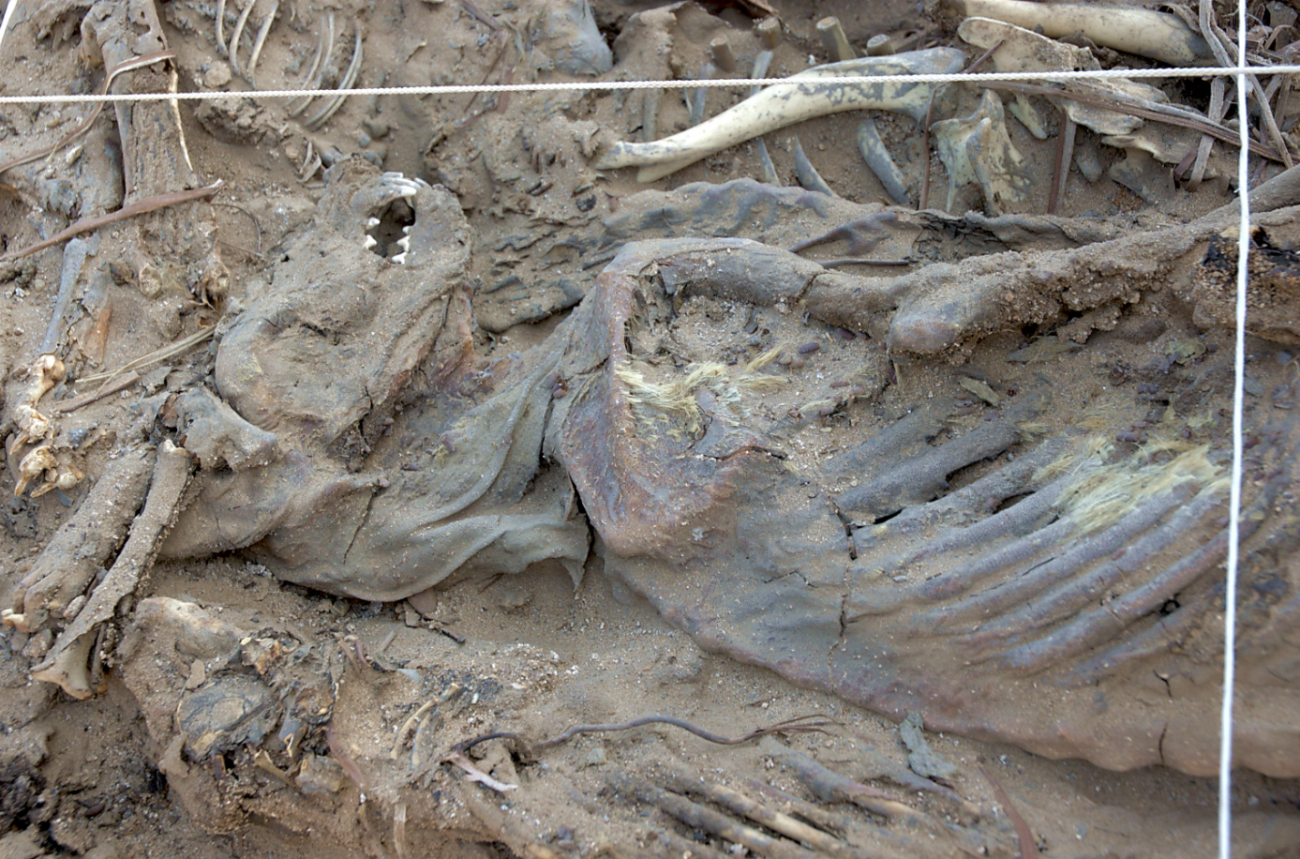
In the Fayum oasis (Egypt), employees of the A.N. Severtsov Institute of Ecology and Evolution of RAS, together with archaeologists and historians from the Center for Egyptological Research of the Russian Academy of Sciences, studied the unique joint burial of humans and dogs in an ancient Coptic cemetery.

The age of the burial is about 2000 years (Roman period). In total, at least 142 individuals were found, 70% of which were puppies under three months of age. The bodies of puppies and the muzzles of some adults were tied with papyrus stems cut lengthwise, and the preserved soft tissues were subject to natural mummification. Traces of clay and silt were found on the skin and bones of many dogs, and the folds of dried skin were filled with puparia of flies and the remains of adults and larvae of carpet beetles.

Morphometric analysis of the bones of adult individuals showed the similarity of the studied dogs with modern stray dogs from Egypt and Sudan. A very large number of puppies indicates their origin from nurseries. Puppies under three months of age fall into two clear groups, suggesting the presence of at least two dog breeding kennels in ancient Fayum. The presence of traces of clay and fly pupae indicates that the corpses of the dogs lay for quite a long time near the water and decomposed.

The very fact that these dogs entered the cemetery, the presence of wrappings and some other features indicate that these half-decomposed corpses were collected with due care by the residents of Fayum and brought to the burial site. It is known that when the Nile floods in August-October, lowlands are flooded, including the Fayum Lowland. It is likely that an abnormally high flood could include some areas where, according to scientists, dog kennels could be located. Apparently, the kennels were fenced or were buildings from which it was difficult for the dogs to get out, which led to their death.
Belova G.A., Khasanov B.F. Krylovich O.A. Ikram S. Vasyukov D.D. & Savinetsky A.B. A Pack of Hounds and its Master? A Bi-Species Burial from the Necropolis of Deir El-Banat (Fayum). Archaeofauna. 2024; 33(1):81-100. http://www.doi.org/10.15366/archaeofauna2024.33.1.005.
Related materials:
